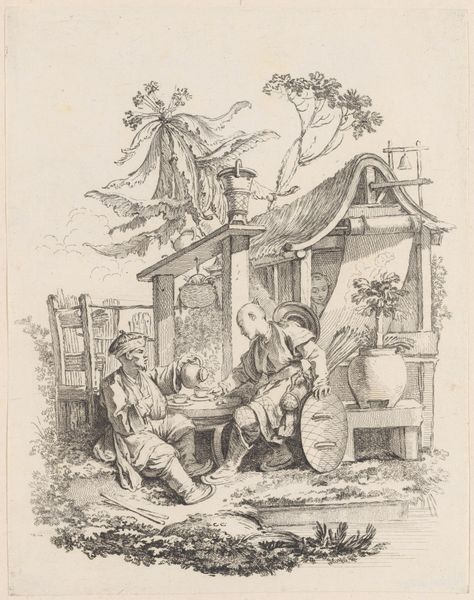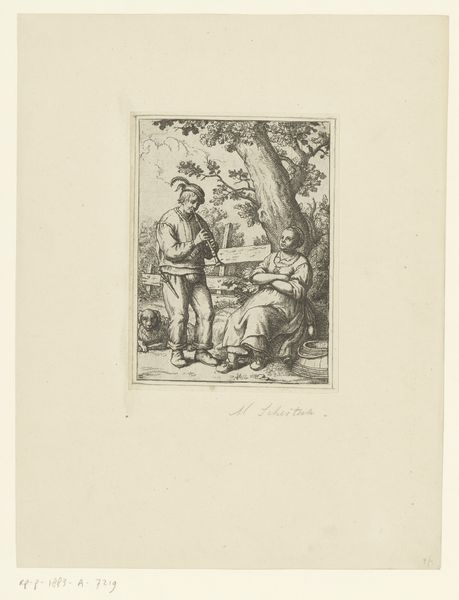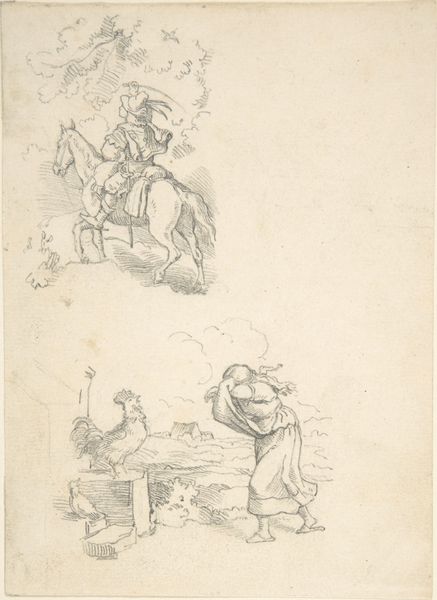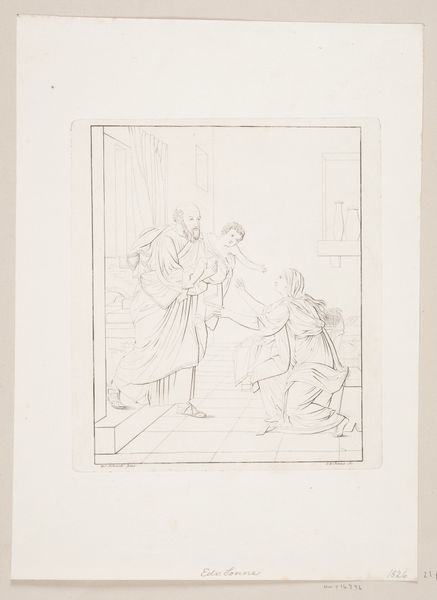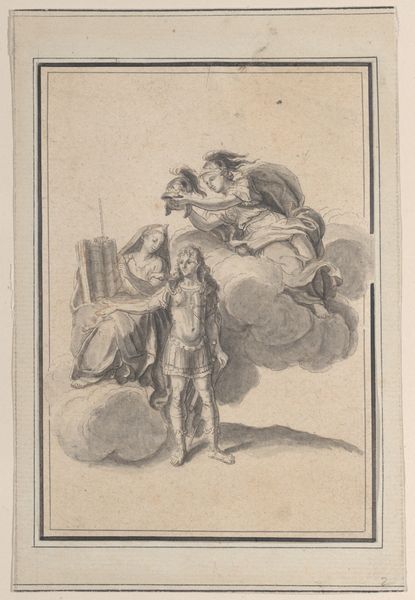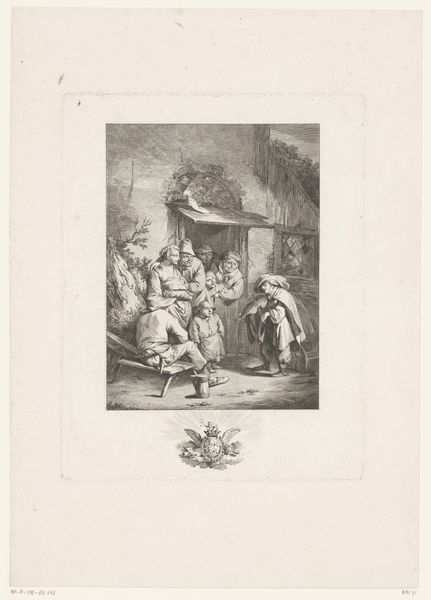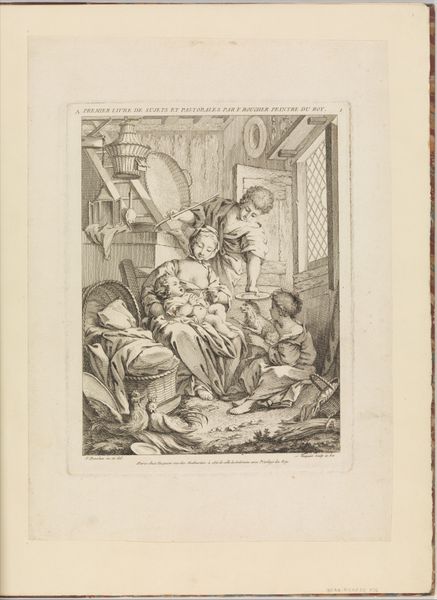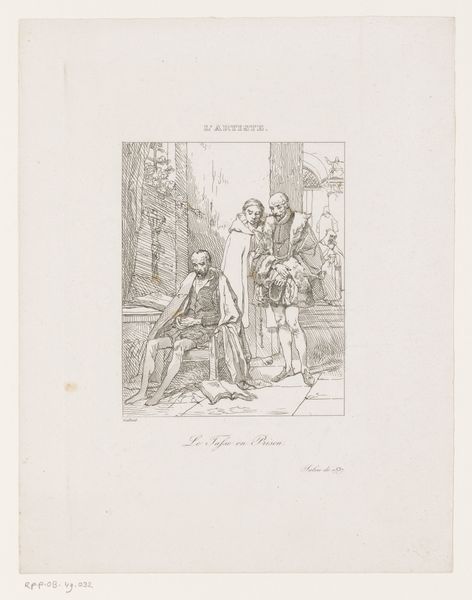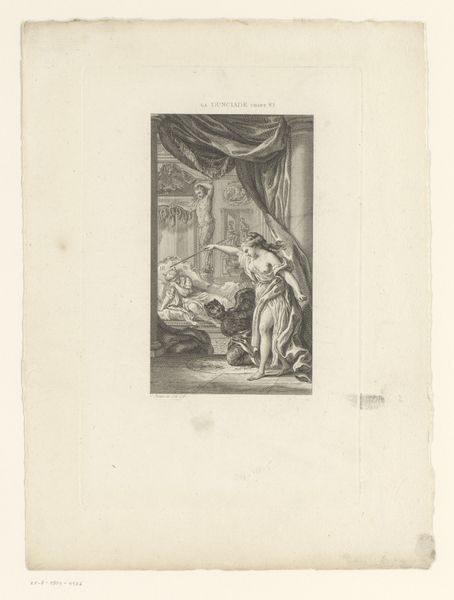
Venus in Vulcan's Forge (recto); Geometry (verso) c. 1607
0:00
0:00
drawing, print, etching, paper, ink, pen
#
drawing
#
allegory
# print
#
etching
#
pencil sketch
#
etching
#
figuration
#
paper
#
11_renaissance
#
ink
#
pen
#
watercolor
Dimensions: 186 × 157 mm
Copyright: Public Domain
Curator: Immediately, there's a dramatic intensity despite the small scale. The bold lines and chiaroscuro effects lend the composition a surprising weight. Editor: Here we have Hermann Weyer's "Venus in Vulcan's Forge," a drawing created around 1607, currently residing here at The Art Institute of Chicago. It's pen, ink and etching on paper, depicting a scene rife with symbolic potential. Curator: Symbolic, certainly, but visually striking as well. The strong diagonal created by Venus's extended arm, balanced by the weight of Vulcan, produces a compelling dynamic tension. What is going on culturally at this time that contributes to its creation? Editor: Well, during the late Renaissance, allegories were very popular in art, so here you see Venus, the goddess of love, visiting Vulcan, the god of the forge. The setting itself is significant – the forge represents labor, transformation, even the alchemical process, ideas that artists of the era found compelling to depict. And the tension! Venus appears almost forceful in this interpretation. Curator: Yes, there’s that wonderful contrast. Her gesture seems to subdue the smith as he is seated. Cupid, there on the side, and is even sitting on what seems to be a cannon! Editor: Indeed. We might see it as a commentary on power dynamics within relationships, perhaps reflecting shifting social structures where traditional roles were being challenged, even questioned. Notice also the architecture represented and the library in the window. A strong statement on their union of beauty, love and intelligence, physical labor, knowledge, and weaponry! Curator: I appreciate your view, but what resonates for me are the artist's mastery of line, the way the ink washes create depth and volume. This formal achievement speaks volumes. Its historical importance cannot overshadow the purely aesthetic merits of this image. Editor: I concede that there's no denying the skill, even though as historians, we cannot ignore context. Perhaps we are drawn in by the inherent tensions present within the overall makeup of its allegorical theme. What do you think the viewers might think in years to come? Curator: I trust that it's a beautiful object, whose lines will continue to charm future generations with its own inherent vitality, standing in stark contrast to other contemporary examples.
Comments
No comments
Be the first to comment and join the conversation on the ultimate creative platform.


